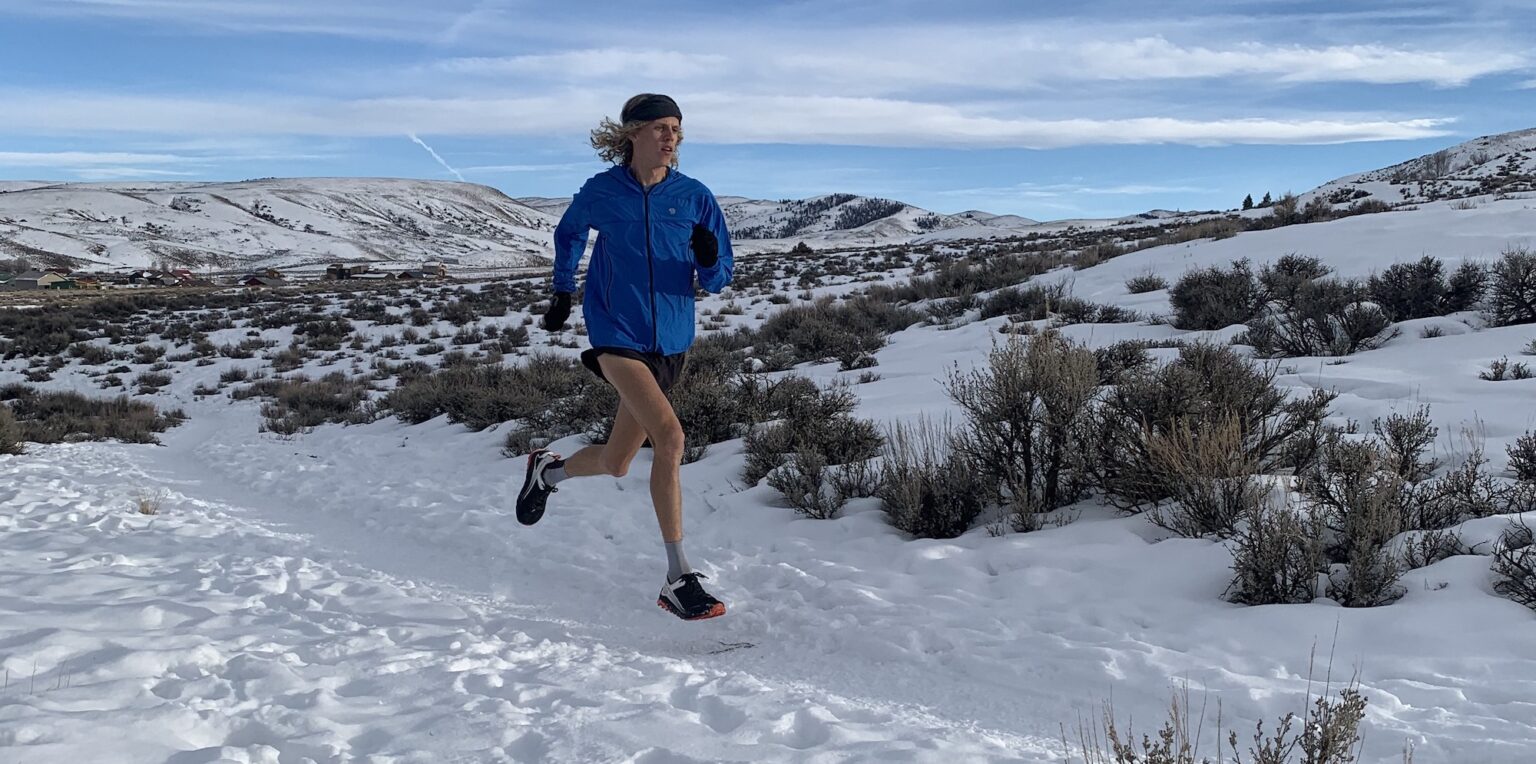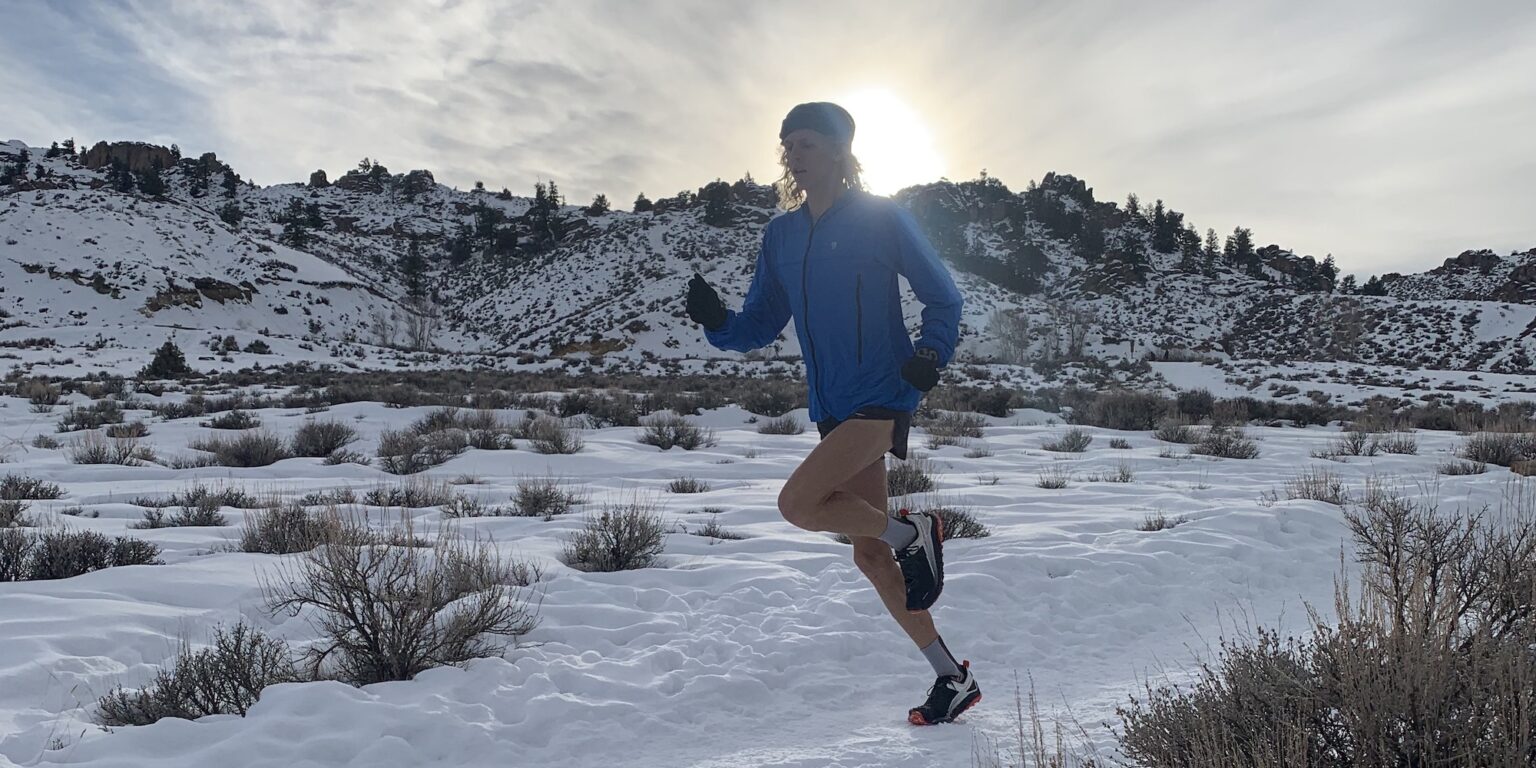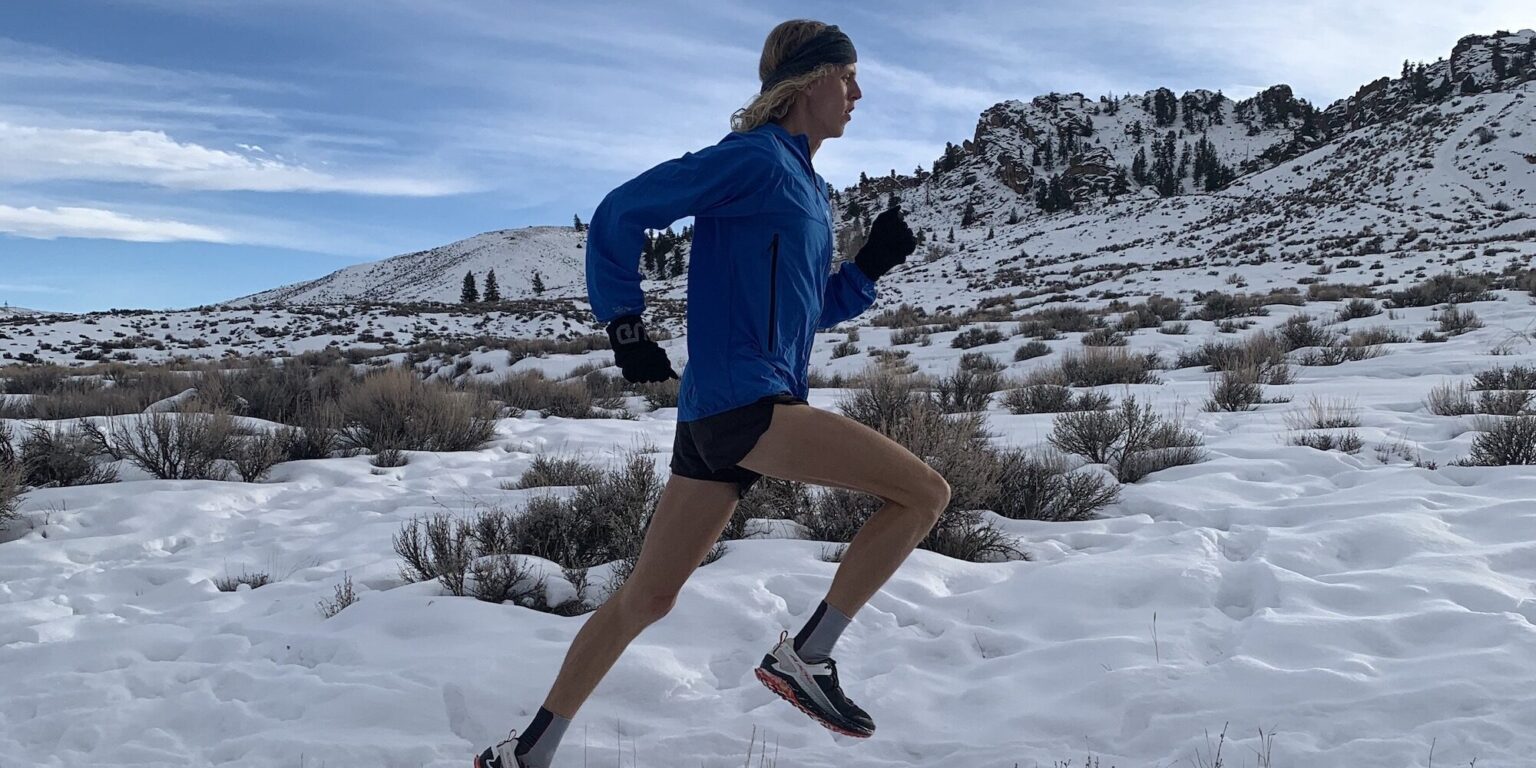Altra Olympus 4.0
Test Locations: Gunnison—Crested Butte & Colorado Springs, Colorado
Test Duration: 75 miles
Stated Stack Height: 33 mm (heel) / 33 mm (forefoot)
Stated Heel-to-Toe Drop: 0 mm
Stated Features:
- Durable mesh upper
- Updated Vibram MegaGrip outsole
- GaiterTrap
- A more locked-in feel
Reviewer: 6’1″, 143 lbs / 185 cm, 65 kg
Size Tested: US Men’s 11
Stated Weight per Shoe (US Men’s Size 9): 329 g / 11.6 oz
Blister Measured Weight (US Men’s 11):
- Shoes + Laces: 309 g (left) & 317 g (right)
- Insoles: 29 g (left) & 28 g (right)
- Total: 338 g (left) & 345 g (right)
MSRP: $170
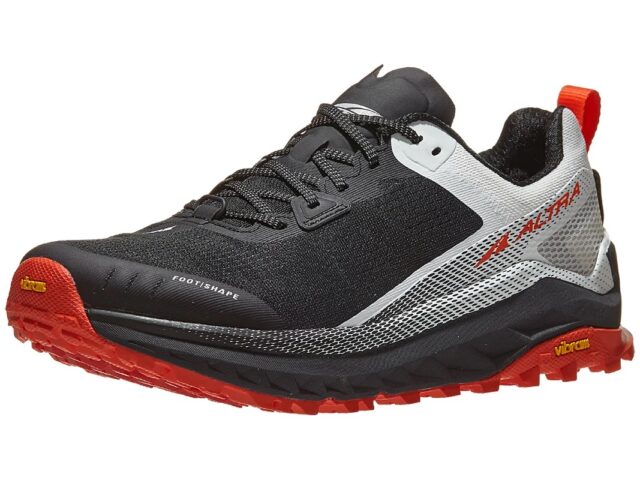
Intro
The world of max-cushion trail shoes has been largely dominated by brands like Hoka — which tends to make fairly narrow shoes. But with its high stack height and Altra’s signature “foot-shape” toe box, the Olympus 4.0 represents an alternative to the many narrower shoes in the high-cushion market. Now on its seventh iteration (following the Olympus 1, 1.5, 2, 2.5, 3, and 3.5), the Olympus 4 has undergone a significant update. Featuring a new upper, a new midsole compound, and a totally revamped outsole, the Olympus 4 is a new — and in my opinion — improved direction for the shoe.
So where does this wide-toe-box, high-cushion trail shoe fit in my trail running lineup, and how does it compare with other options on the market? After about 75 miles in the shoe, I have some thoughts about where the Olympus does well, as well as where I’ve found myself reaching for a different pair of shoes.
Olympus 4.0 vs Olympus 3.5
I ran close to 500 miles in the previous version of the Olympus, and it was one of my favorite trail shoes to date. The Olympus 4.0 keeps a lot of the core features of the Olympus 3.5, but it’s also a pretty significant update. According to Altra, the 3.5 and 4.0 have the same stack height, but I think that the 4.0 feels a touch firmer underfoot and a little more energetic.
The Olympus 4’s fit is also quite different from that of the 3.5, in my opinion for the better (more on that later). Like the 3.5, The Olympus 4.0 has a Vibram Megagrip outsole, but with an updated lug pattern that provides better traction in my experience. Overall, the Olympus 4.0 feels like a higher-quality shoe, something that is reflected in the $20 price-hike from the previous version.
Fit
As with every product we review, we recommend that you try on the Olympus 4.0 in a store before buying it to see how it fits your particular feet. With that said, here are some notes on how the Olympus 4.0 fits my foot. For reference, I have a relatively narrow foot with medium-height arches. I tend to prefer shoes with a solid lockdown through the midfoot but that still provide a little bit of room for my toes to splay out.
Out of the box, the Olympus 4.0’s fit felt like a marked improvement over version 3.5, at least for me. The entire upper feels a bit lower-volume, allowing the shoe to hold your foot in place more securely. The thinner tongue also helps me get a more locked-in fit. That said, the Olympus 4.0’s toe box is definitely pretty wide, even for an Altra. When compared with a shoe like the Timp 2 the Olympus feels a lot more accommodating / spacious, particularly in the toe box. That’s been great for longer runs over relatively smooth terrain.
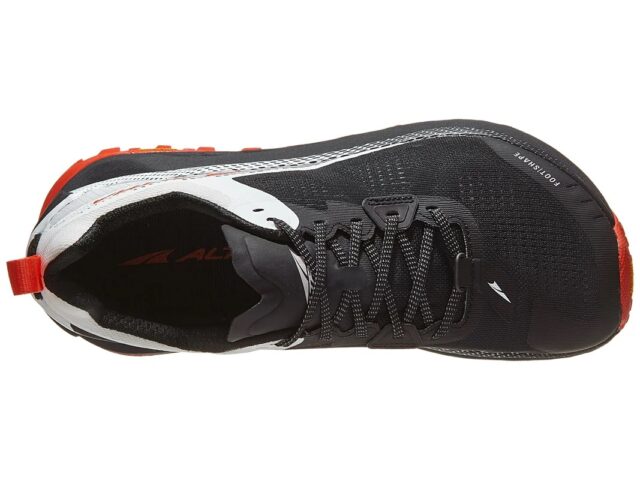
The only place where I find the fit of the Olympus 4.0 to be a little too accommodating is when running on more technical mountain trails. In these settings, the extra room afforded by the extra-wide toe box leads to a lot of slippage inside the shoe. Again, it’s worth noting that I have relatively narrow feet — so this may not be a problem for runners with wider / higher-volume feet that fill the shoe better.
Weight
With a stated weight of 329 g / 11.6 oz (US men’s size 9) the Olympus 4.0 is certainly not the lightest trail shoe around, but then again, that really isn’t what this shoe is designed to be. Below I have included the stated weights of some similar maximalist trail shoes from different brands (all stated weights are based on a US men’s size 9):
292 g / 10.3 oz — Hoka One One Evo Mafate 2
295 g / 10.4 oz — Asics Trabuco Max
300 g / 10.6 oz — Salomon Ultra Pro
306 g / 10.8 oz — Hoka One One Speedgoat 4
329 g / 11.6 oz — Altra Olympus 4.0
While it does come in as the heaviest shoe on this list, out on the trail the Olympus 4.0 doesn’t feel markedly heavier than a shoe like the Hoka One One Speedgoat 4 that’s a fair amount lighter on paper. Ultimately, the Olympus 4.0’s wider platform (more on that later) and full Vibram outsole just make it a heavier shoe — but that doesn’t necessarily make it a bad shoe. If you’re looking for a wide-fitting, high-cushion trail shoe, don’t let the weight dissuade you from looking into the Olympus 4.0.
Upper
The upper of the Olympus 4.0 is totally revamped from the previous version. The mesh material that Altra is using in this shoe is a lot softer, lighter, and stretchier than some of the materials they have used in previous shoes. The upper of the Olympus 4.0 feels the most similar to the upper of the Altra Superior 4.5 The pliability of this upper, along with the thinner tongue and slimmer midfoot fit, help to give the Olympus 4.0 a more locked-down feel than its predecessor.
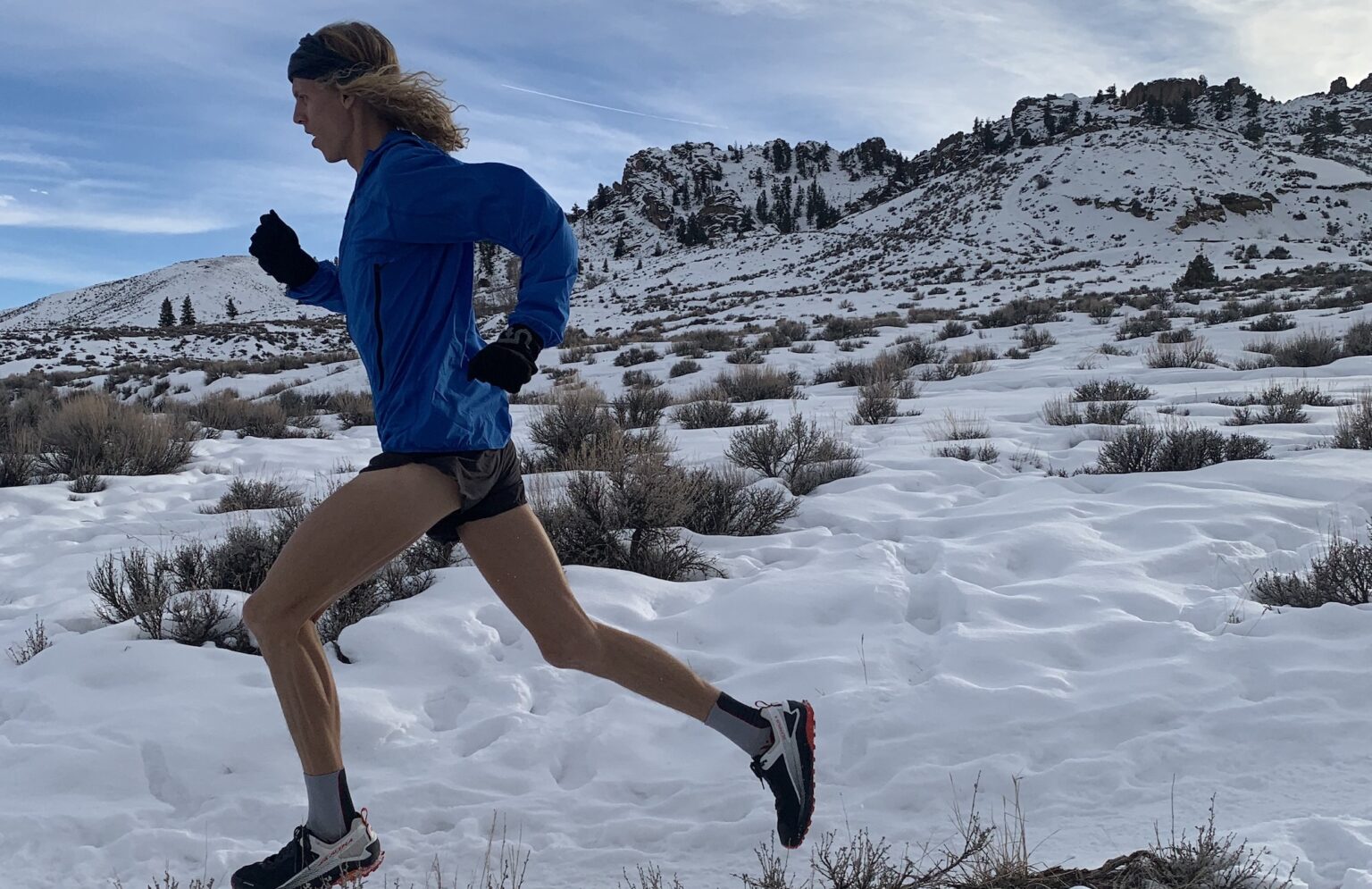
Midsole
The midsole of the Olympus 4.0 provides a soft, max-cushion ride. With that said, the new version of the Olympus does feel a little firmer underfoot — even though it has the same stack height as its predecessor. Altra says that the Olympus 4.0 uses a compression-molded EVA foam in the midsole, which feels a bit firmer than the Quantic midsoles on shoes like the Superior 4.5 and Olympus 3.5. This does give the Olympus 4.0 a more energetic ride, but it also sacrifices a little bit of comfort. When compared to a shoe like the Hoka Speedgoat 4, the Olympus feels markedly firmer. Those who are used to the marshmallowy cushion of some of Hoka’s shoes or the older Olympus iterations may find that the Olympus 4.0 feels firmer underfoot. While it’s definitely still a max-cushion shoe, the Olympus 4.0 kind of follows the trend set by the Altra Timp — it doesn’t feel quite as plush as you might expect from its substantial stack height.
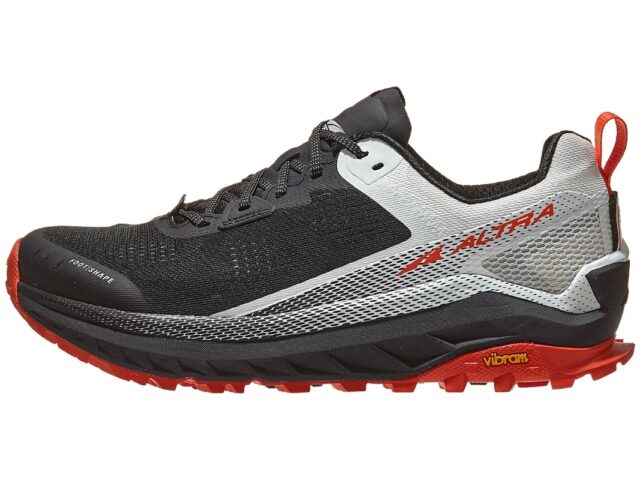
Outsole
Featuring a Vibram Megagrip outsole and a totally revamped lug pattern, the traction on the Olympus 4.0 is hugely improved over the previous version. There is a lot less exposed foam and a lot more rubber on the outsole of version 4.0 than there was on the 3.5. This may be part of the $20 price hike between models — but if so, I think it’s totally worth it.
The lugs on the Olympus 4.0 are relatively close together and aren’t super big — which works great on the smoother trails that the Olympus is designed for. The lugs are just grippy enough without being inefficient on packed-out singletrack. In wetter conditions, the Vibram Megagrip compound does a great job of sticking to wet rocks and roots as well.
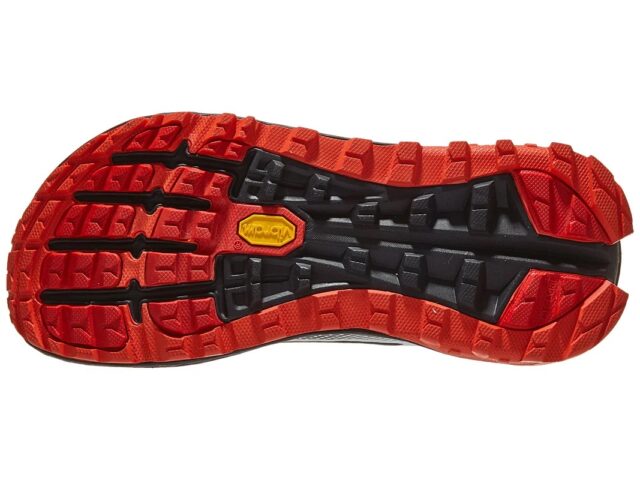
The only area where the Olympus 4.0 struggled in terms of traction was in deeper mud. The closely spaced, shallow lugs aren’t ideal for shedding mud. This is by no means a deal-breaker, but if you live in a particularly wet climate with a lot of mud it is worth keeping in mind.
On Trail
I put the Olympus 4 to the test on a variety of different runs, from flatter road-to-trail routes to steeper, more technical runs over rolling terrain. As a maximalist trail shoe, the Olympus 4.0 is definitely designed to tackle long runs while keeping your feet protected from the miles. Unsurprisingly, longer / slower-paced are certainly where the shoe shines. The max-cushion midsole, combined with a versatile outsole and accommodating fit, makes the Olympus 4.0 one of my go-to long-run shoes. When a route calls for a lot of rolling mileage over largely non-technical terrain, the Olympus 4.0 is a great option.
With my narrower foot, I did find that the Olympus 4.0 felt a little sloppy on more technical and off-camber terrain. For that kind of terrain, I often find myself reaching for a tighter-fitting shoe like the Salomon Sense Ride 3 or the Hoka Speedgoat 4. Again, it’s important to note that runners with wider feet might not have these problems, but it’s certainly been noticeable for me.
Recently, I’ve also found the Olympus 4.0 to be a great option for winter road running on the icy and snowy roads of Gunnison. The lugs aren’t so big that the shoe feels unwieldy on pavement, but they are just deep enough to add a little bit of bite when running on snow-packed roads.
Durability
Durability is an area where I expected the Olympus 4.0 to excel, and so far I haven’t been disappointed. At around 75 miles in the shoe, the outsole is showing almost no signs of wear (as I’d expect at this mileage) and the midsole feels pretty much just as lively as it did on the first couple of runs — which hasn’t always been the case in other Altra shoes. The upper also isn’t showing any signs of wear so far.
I ran almost 500 miles in the Olympus 3.5 before it started to show some pretty significant wear in the mesh where the toe cap attached to the rest of the upper. Aside from that, the outsole and midsole were still holding up. I fully expect the Olympus 4.0 to reach that benchmark, but I will report back if I run into any unexpected durability issues down the road.
Who’s It For?
The Olympus 4 is a fantastic shoe for zero-drop, wide-toe-box enthusiasts seeking a max-cushion shoe, but who are tired of trying to cram their foot into a Hoka. The Olympus 4.0’s accommodating fit, thick midsole, and versatile outsole make it a great pick for anyone looking to run long on relatively non-technical trails. With a hefty $170 price tag, it’s definitely an investment, but if previous versions of the shoe are any indication, the Olympus 4 should last pretty long. Overall, for what you’re getting in terms of the fit, durability, and quality of the materials, I think the Olympus 4 is certainly worth a look if you’re in the market for a high-cushion trail shoe.
With that said, if you usually run on more technical trails, have a particularly narrow foot, and / or prefer a shoe with a higher heel-to-toe drop, I think there are some other potentially better options available on the market — many of which are more affordable as well.
Bottom Line
The Altra Olympus 4.0 is a pretty versatile, max-cushion trail shoe. While the Olympus 4.0 isn’t my first choice for running super technical terrain or at faster paces, I have found myself reaching for it for a wide variety of runs. From easy road-to-trail runs to long days out in the mountains, the Olympus 4.0 has been a great shoe to have in my lineup for when I want a shoe that will take the edge off the impact of each stride and keep me running comfortably. If you’re looking for a max-cushion trail shoe with an accommodating toe box and a high-quality build, the Olympus 4.0 is definitely worth a look.

